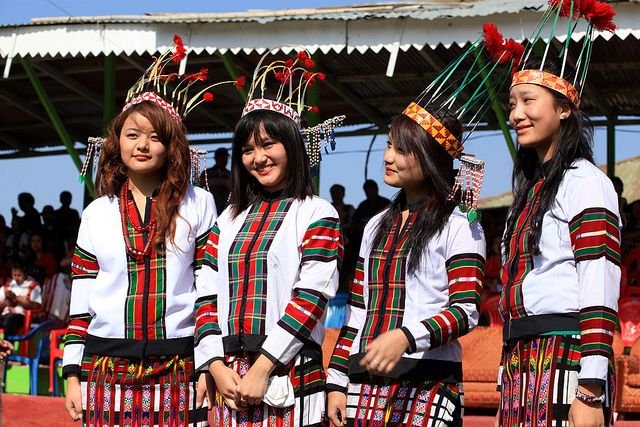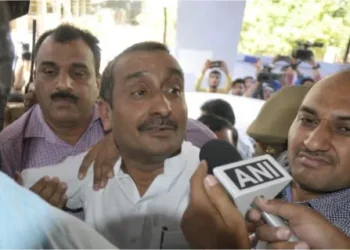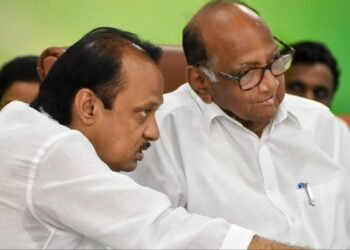The NER SDG Index tracks progress on violence against women, sex ratio, reproductive health, and women’s economic participation.
BY PC Bureau
New Delhi — Saitual (Mizoram) and Wokha (Nagaland) have emerged as the top-performing districts on gender equality in the North East, according to the newly released NER District SDG Index 2023–24, a joint initiative by the Ministry of Development of North Eastern Region (MDoNER), NITI Aayog, and UNDP. Both districts scored 98 out of 100 on Sustainable Development Goal 5 (SDG 5): Gender Equality, placing them firmly in the “Front Runner” category.
In total, 112 of 121 ranked districts were categorized as Front Runners, scoring between 65–99. Districts like Longleng and Mokokchung (Nagaland), Zunheboto, Mon, and Karbi Anglong (Assam) followed closely behind.
MUST READ: The Mega Tribal Land Grab (1): The Maharashtra Scam
But the report also brought troubling news: Pherzawl in Manipur was the only district in the entire Northeast to fall under the “Aspirant” category (score below 50), with serious deficits in indicators such as violence against women, reproductive health, and economic participation.
NER SDG Index: A Diagnostic of Gender Justice
The NER District SDG Index, first launched in 2021, measures the progress of all northeastern districts across multiple Sustainable Development Goals. The 2023–24 edition places a strong focus on Goal 5: Gender Equality, highlighting areas such as:
- Crimes against women
- Sex ratio at birth
- Unmet needs for family planning
- Economic inclusion of women through SHGs
- Incidence of sexual crimes
This year’s data reveals a deep urban-rural and inter-district divide in gender development, despite many northeastern states having relatively high literacy and health indices.
Sharp Contrasts: Mizoram vs Manipur
While Mizoram leads in gender equality—Saitual, Champhai, and Khawzawl all scored above 85—several tribal-majority districts in Manipur, including Bishnupur (59) and Kangpokpi (63), hovered near the lower performance band.
READ: Deverakonda, Prakash Raj Among 29 Booked in Betting Scam
East Jaintia Hills (Meghalaya) stood out for the wrong reasons, reporting the highest ratio of sexual crimes relative to total crimes against women. Kamrup (Assam) and Papum Pare (Arunachal Pradesh) also scored poorly in crime indicators.
A senior NITI Aayog official noted:
“Progress on Goal 5 reflects more than women’s welfare—it’s a mirror to the health of democratic participation, economic inclusion, and safety in any society. The Northeast shows promise, but glaring gaps remain.”
The North Eastern Region District SDG Index 2.0 shows remarkable progress in the region! @UNDP_India is proud to support @NITIAayog, @MDoNER_India & NER states in tracking & accelerating the #SDGs in the region.
Frontrunner districts up from 62% to 85% since 2021-22. #Mizoram,… pic.twitter.com/3K5zjkeCHl
— UNDP India (@UNDP_India) July 7, 2025
Why This Matters
Despite the northeast’s image as a region with relatively better status for women, the data shows systemic inequalities that are often masked by aggregate state-level indicators. The Index calls for:
- Stronger implementation of women’s safety laws
- Improved access to family planning and reproductive healthcare
- Boosted economic participation through SHGs and credit access
📊 Top 10 Districts on Gender Equality (SDG 5)
| Rank | District | State | Score |
| 1 | Saitual | Mizoram | 98 |
| 1 | Wokha | Nagaland | 98 |
| 3 | Longleng | Nagaland | 96 |
| 3 | Mokokchung | Nagaland | 96 |
| 5 | Zunheboto | Nagaland | 95 |
| 6 | Mon | Nagaland | 94 |
| 7 | West Tripura | Tripura | 91 |
| 8 | Tawang | Arunachal | 90 |
| 8 | Karbi Anglong | Assam | 90 |
| 8 | Tuensang | Nagaland | 90 |
The report urges state governments and district administrations to act on disaggregated data, tailor policies to local challenges, and fill data gaps—especially in districts marked “Not Available” due to insufficient inputs.
With the 2030 deadline for SDG targets approaching, northeast India has a unique opportunity to lead the country in gender-responsive governance. But that would require going beyond policy intent to measurable outcomes.
“The region can be a laboratory for inclusive development if backed by political will and grassroots implementation,” said a UNDP analyst.













